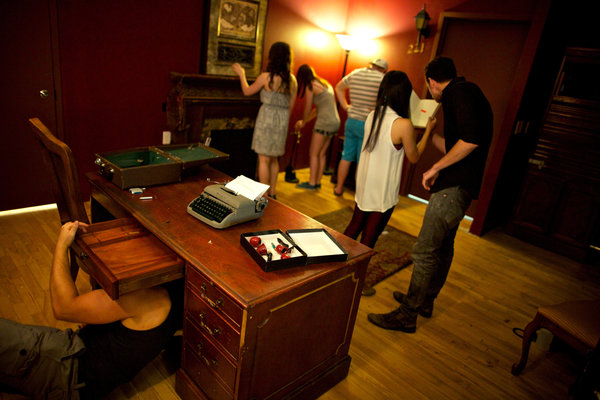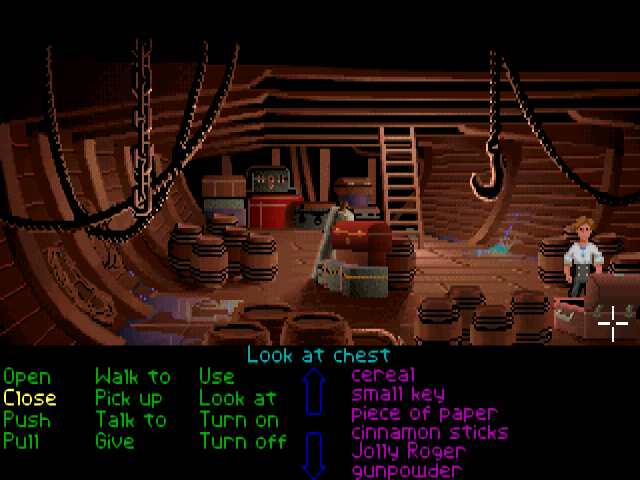Escape rooms combine digital and non-digital game ideas.
Escape rooms have become very popular around the world over the past few years, and contrary to popular belief, they did not suddenly spring into existence. Instead, they have roots in various other industries dating back to the 1980’s. Scott Nicholson analyses the phenomenon in his article “Emergence or Convergence? Exploring the Precursors of Escape Room Design”, published in Analog Game Studies. He conducted a survey to study the sources of inspiration for escape room designers, and the results revealed a problem in modern game studies.

Solving puzzles in an escape room. Source
Traditionally, games are divided into digital and non-digital games, but the division becomes a problem when game designers are looking for inspiration. Many escape room designers tend to copy ideas from other escape rooms, when they could be trying out new ideas from different sources, combining digital and non-digital games. Nicholson illustrates this by examining the various roots of escape rooms.
One important precursor to escape rooms is the classic point-and-click adventure genre, which often introduced escape scenes in games such as Monkey Island or Myst. The use of items to solve puzzles is familiar to players of the genre, although in a non-digital environment the players need to be given information about which items are important and feedback on whether they are on the right track.

Point-and-click action in Monkey Island. Source
Escape rooms have also been affected by puzzle hunts and TV shows. Puzzle and treasure hunts emerged decades ago and had players solving challenging puzzles, and modern versions of treasure hunts include geocaching. Reality shows such as Survivor and The Amazing Race popularized the idea of working in teams to solve puzzles, and the thirst for adventure and horror experiences were inspired by movies such as Indiana Jones or Saw.
Horror is a popular theme in the entertainment industry, and haunted houses and interactive theatre are being introduced into the escape room scene. There are also themed restaurants where customers get to solve mysteries. Participants are invited to interact with the actors and the environment, much like in live-action role-playing, which is also a precursor for escape rooms. Many designers feel that connecting escape rooms with role-playing will scare customers away, but it could be a valuable way of immersing the players and introducing narrative.
Escape room design requires variety, and understanding the origins of the phenomenon will provide designers with a toolkit full of ideas. Escape room design experience will also be useful in improving other forms of interactive entertainment. There is no need to make a clear-cut division between digital and non-digital, since they are often inseparable. It can even be problematic in the field of game studies, as the use of video or digital in publication and community titles can discourage scholars from offering research they feel will not be perfectly suited for those publications.
Authors: Scott Nicholson
Published in: Analog Game Studies, March 7, 2016
Original article: http://analoggamestudies.org/2016/03/emergence-or-convergence-exploring-the-precursors-of-escape-room-design
Featured image: Boredinvancouver.com (http://boredinvancouver.com/wp-content/uploads/2015/10/escape3.jpg)
You might also like
More from Game Research Highlights
How do you want to do this? – A look into the therapeutic uses of role-playing games
Can playing RPGs contribute positively to your wellbeing? A recent study aims to find out how RPGs are being used …
Eldritch horrors and tentacles – Defining what “Lovecraftian” is in games
H.P. Lovecrafts legacy lives today in the shared world of Cthulhu Mythos and its iconic monsters. Prema Arasu defines the …
Are Souls Games the Contemporary Myths?
Dom Ford’s Approaching FromSoftware’s Souls Games as Myth reveals the Souls series as a modern mythology where gods fall, desires …















